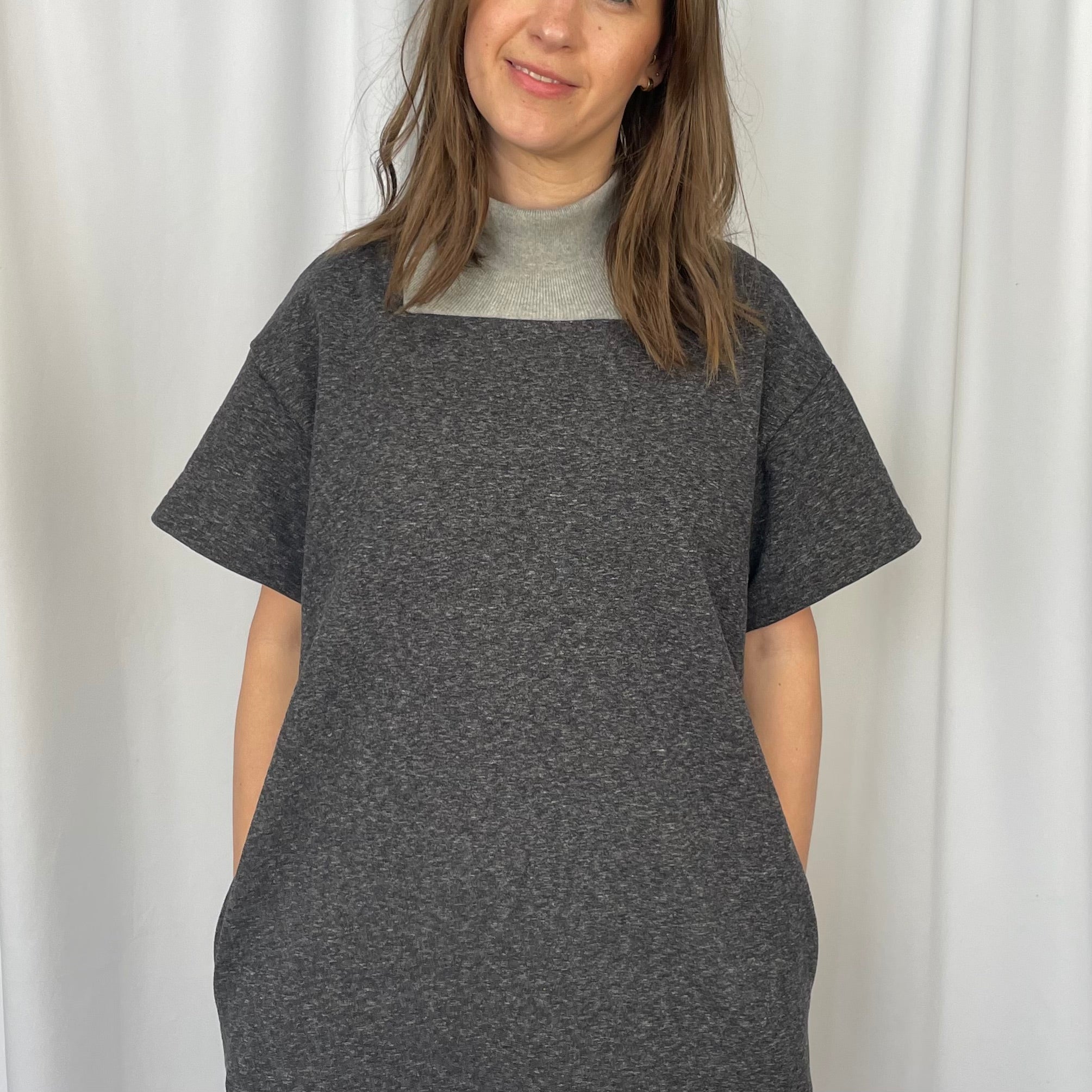OSF Makes: Pona Coat by Heather
We realised this pattern review for Helen's Closet Pona Jacket and tips for hacking it into a coat by OSF contributor @heathersewist was buried in our archives. It's so full of tips and tricks we dusted it off to give it it's very own blog post!
OSF Makes: “The Pona Coat by Heather”

This navy blue fine woven wool with blue pinstripes is a gorgeous suit weight and perfect for transition into fall. With a kasha (flannel backed satin) lining it could probably go all winter with room for a sweater underneath. I found this wool to be an absolute dream to work with - it presses beautifully and is stable and easy to sew with. You might be surprised to learn that I pre-washed and dried this fabric by machine before sewing it up. If it comes into my house it needs to be able to survive washing and drying or it has no chance for a long life - or at least, a long well-fitting-garment life…

I prefer to choose an outer and inner side of fabric (right side/wrong side seems so limiting to me!). This gratuitous tattoo photo (not really gratuitous - it was the best way to capture a reasonable facsimile of the colour in my basement sewing room) shows both sides of the wool and I chose to use the side that was less like dashes and more like stripes as the outer side for this project. For the bias finish on all the visible seam allowances, I used a cotton twill in a beautiful blue colour that works perfectly with the fabric. This was a relatively lightweight cotton twill - very stable and presses beautifully.
The Pona Jacket pattern by Helen’s Closet is a beginner friendly PDF pattern and can be found here. This is a dropped shoulder boxy jacket with a generous lapel and is designed to be worn open at the front. There are two views available - one cropped and one designed to be worn mid-thigh length. To show off the long lines of this lovely pinstripe, I extended the length of the longer view by 13” for a 44” finished length on this size 8.

The other change I made to the pattern was to add on a belt and loops so the belt can be tied at the front or back or left loose. I cut the belt from two 10” high (about 25.5 cm) strips joined to make a strip about 80” (about 2m) long. You can make it any length that is comfortable for you. I folded the long edges into the center, pressed, then folded it all in half, pressed, finished each end at an angle, then topstitched and edgestitched all around.

I made two belt loops from one 2” x 7” (approximately 5 cm x 18 cm) strip folded into 4 layers the same way, then cut into 2 after edgestitching.

(Helen’s Closet has a blog post here about how to add a tie belt to the Pona Jacket! I think her measurements are slightly different than mine, but definitely the same idea. Helen also has a blog post about adding lining to the Pona Jacket.)

The method I used to make the bias tape goes like this:
I draw approximately diagonal lines between two parallel sides of an on-grain rectangle or square of the fabric. Somewhat diagonal usually provides enough stretch and you get more strips if it’s shy of a 45-degree angle.

In this case, I measured and drew the strips 1 ¼” (32 mm) wide. To make one length of binding, I join the opposite ends of the drawn strips, off-setting by one line when I sew them together and that gives me a continuous length to cut, going around and around. There are many methods to make bias tape and people often cut them out and join the strips individually - this is just the method I prefer.

In order to make the Hong Kong seam finish with this method, I:
Stitch on the bias tape with a ¼” (6 mm) seam allowance
1. Press and turn it to the underside of the seam allowance2. Catch the binding doing a stitch-in-the-ditch (where the bias and seam allowance meet)
And, mostly, not have to trim the binding from the underside (unless I folded the binding over too tightly). I probably could’ve gotten away with 1 ⅛” (28 mm) this time but I wanted to allow a generous turn of the cloth because the twill was a little heavier than I am used to using for binding on lighter weight projects.
If you happen to follow me on Instagram, you may have seen this photo of the binding in progress already (@heathersewist).

I love seeing other people’s sewing projects in progress, so I hope my first ever blog post contribution might be fun for you. (I’m already looking forward to doing this again, one day!)
Do you like working with wool?
You can find this fabric here in the online store. Let me know if you give it a try and I hope you enjoy working with it as much as I did!





Leave a comment
This site is protected by hCaptcha and the hCaptcha Privacy Policy and Terms of Service apply.